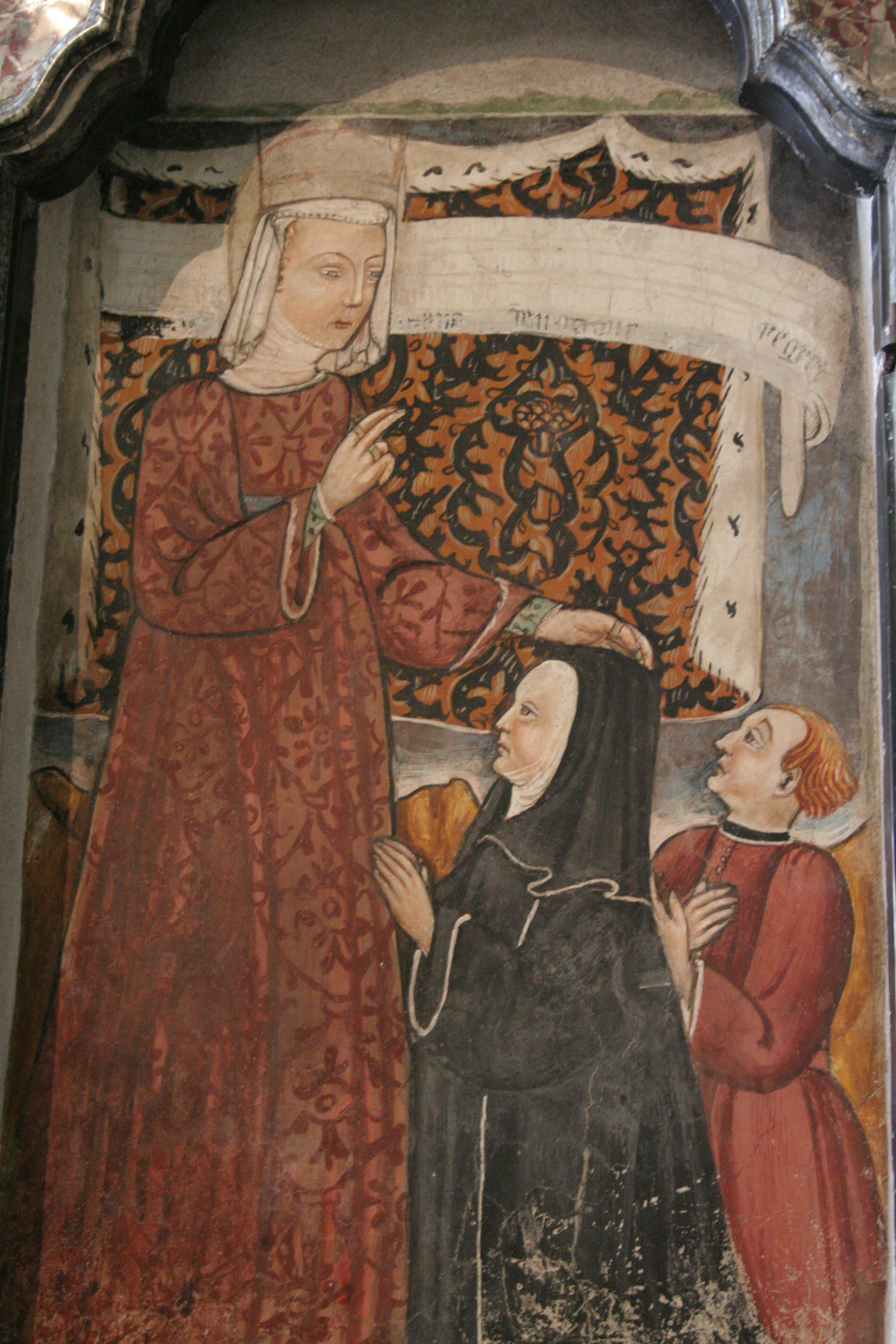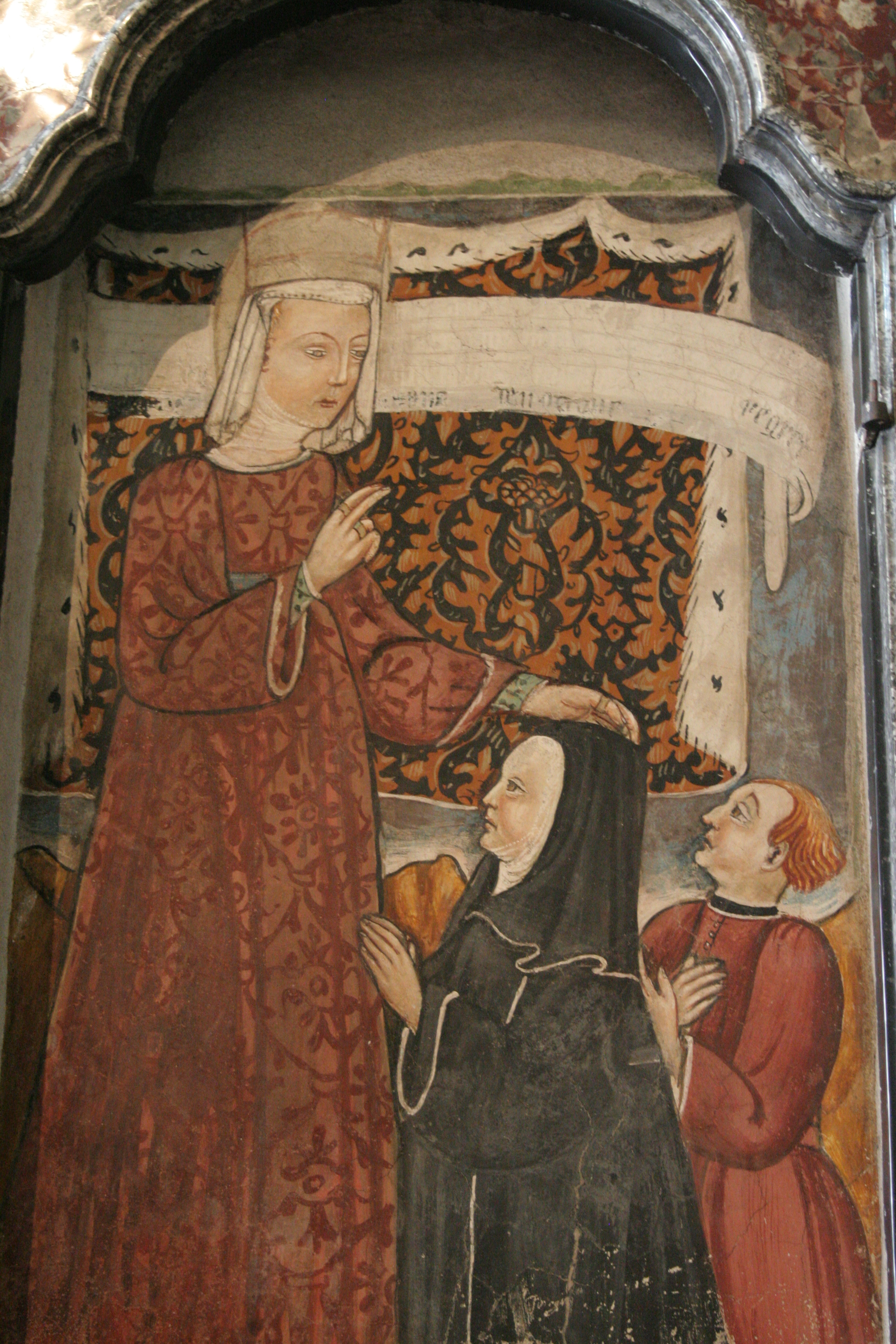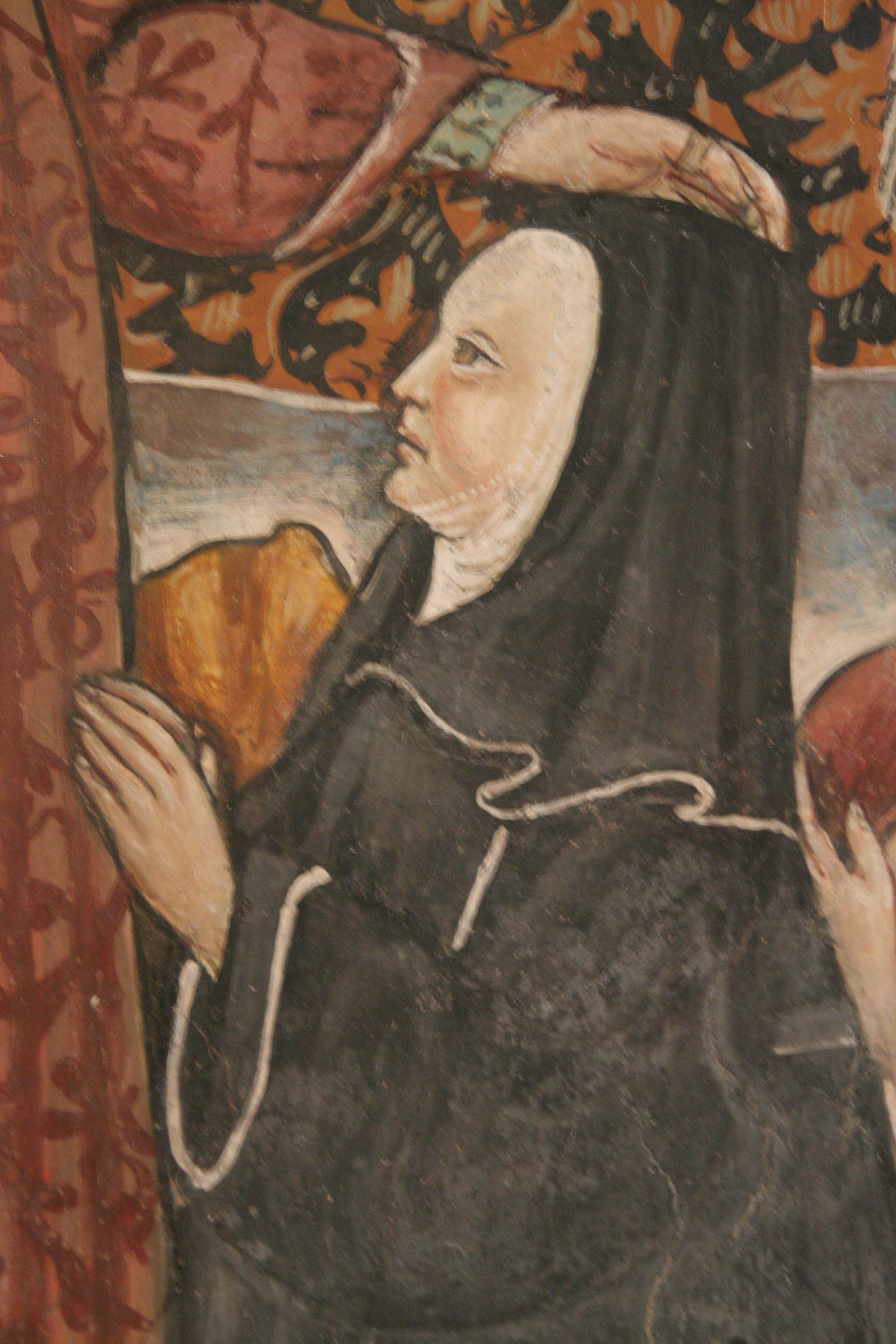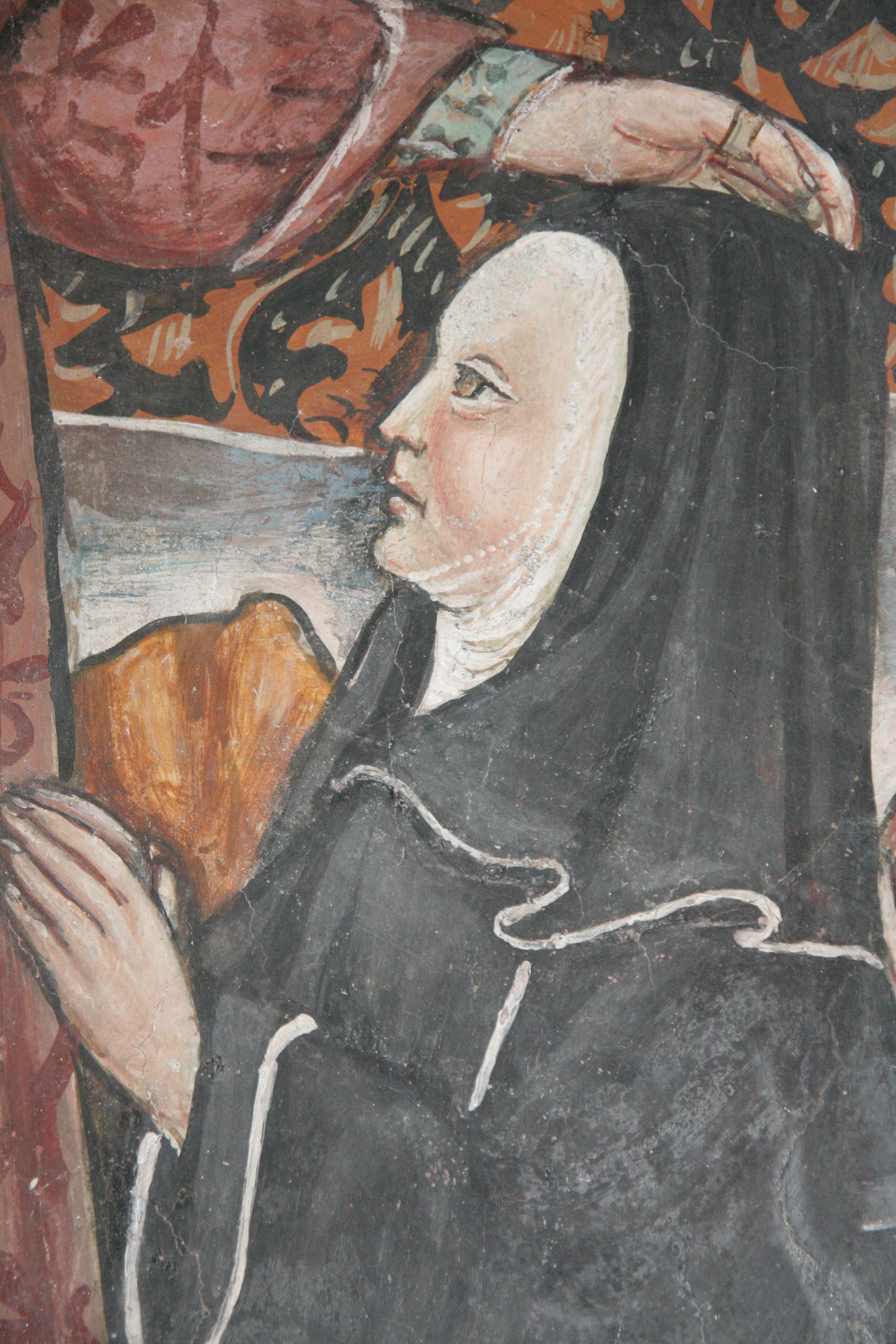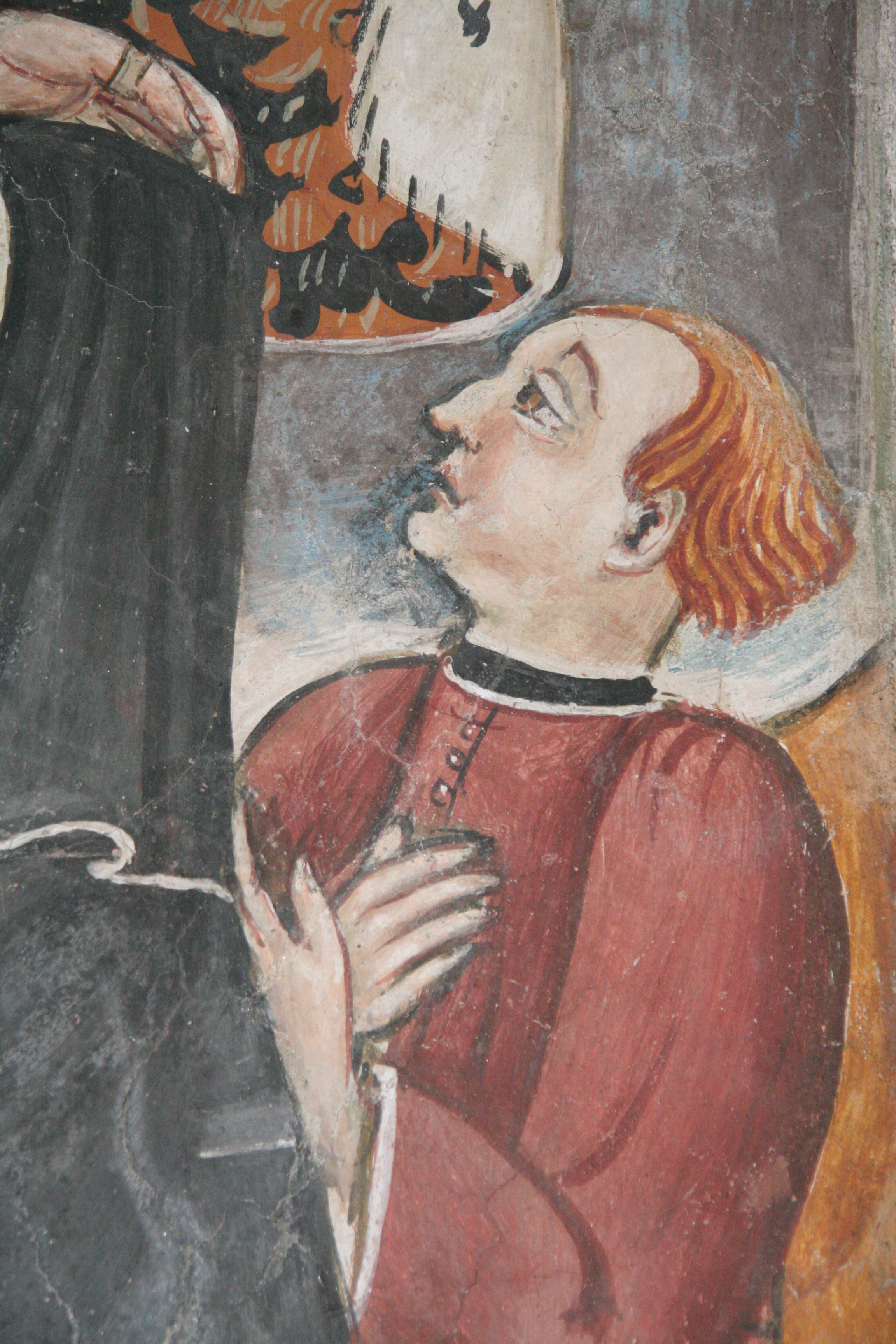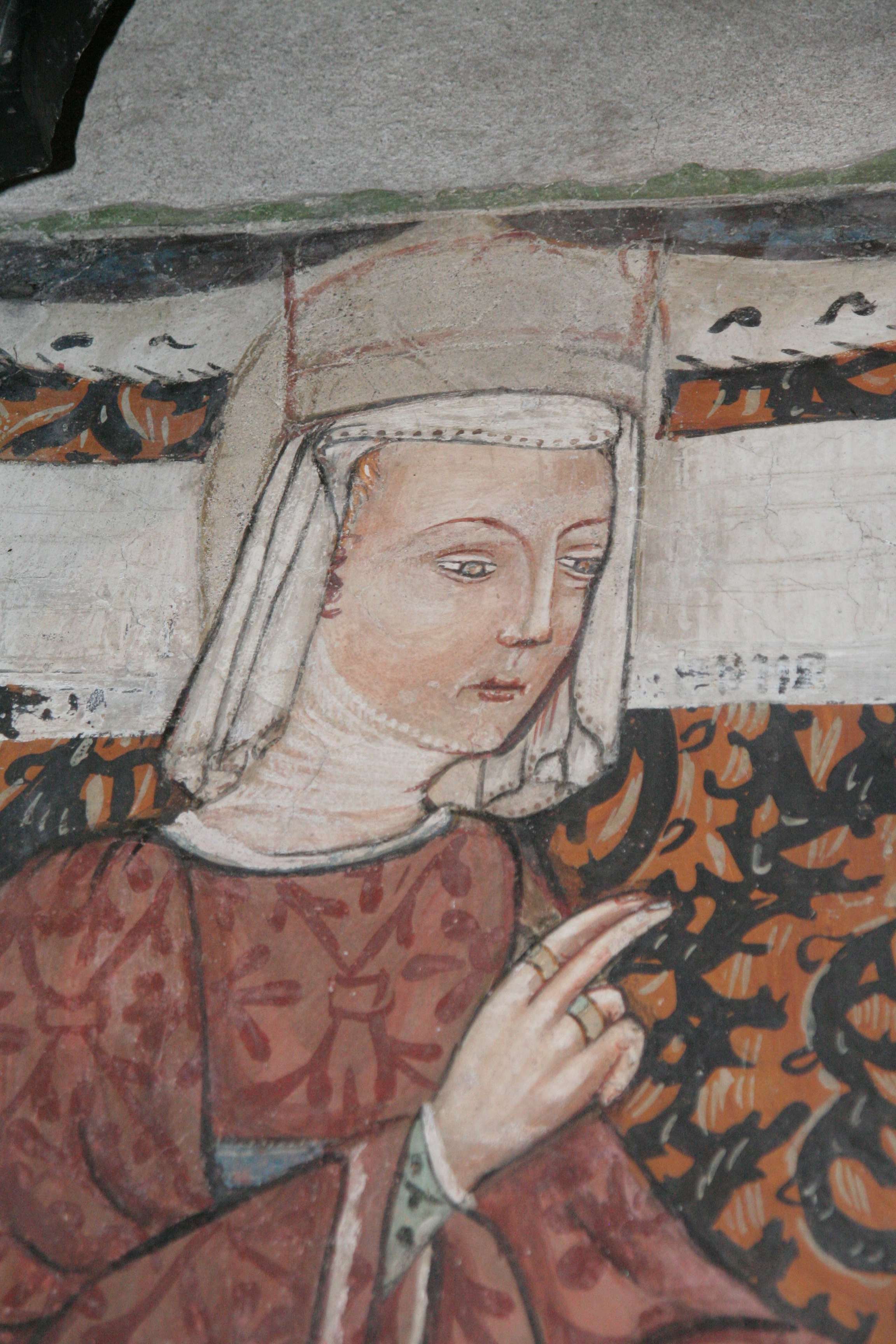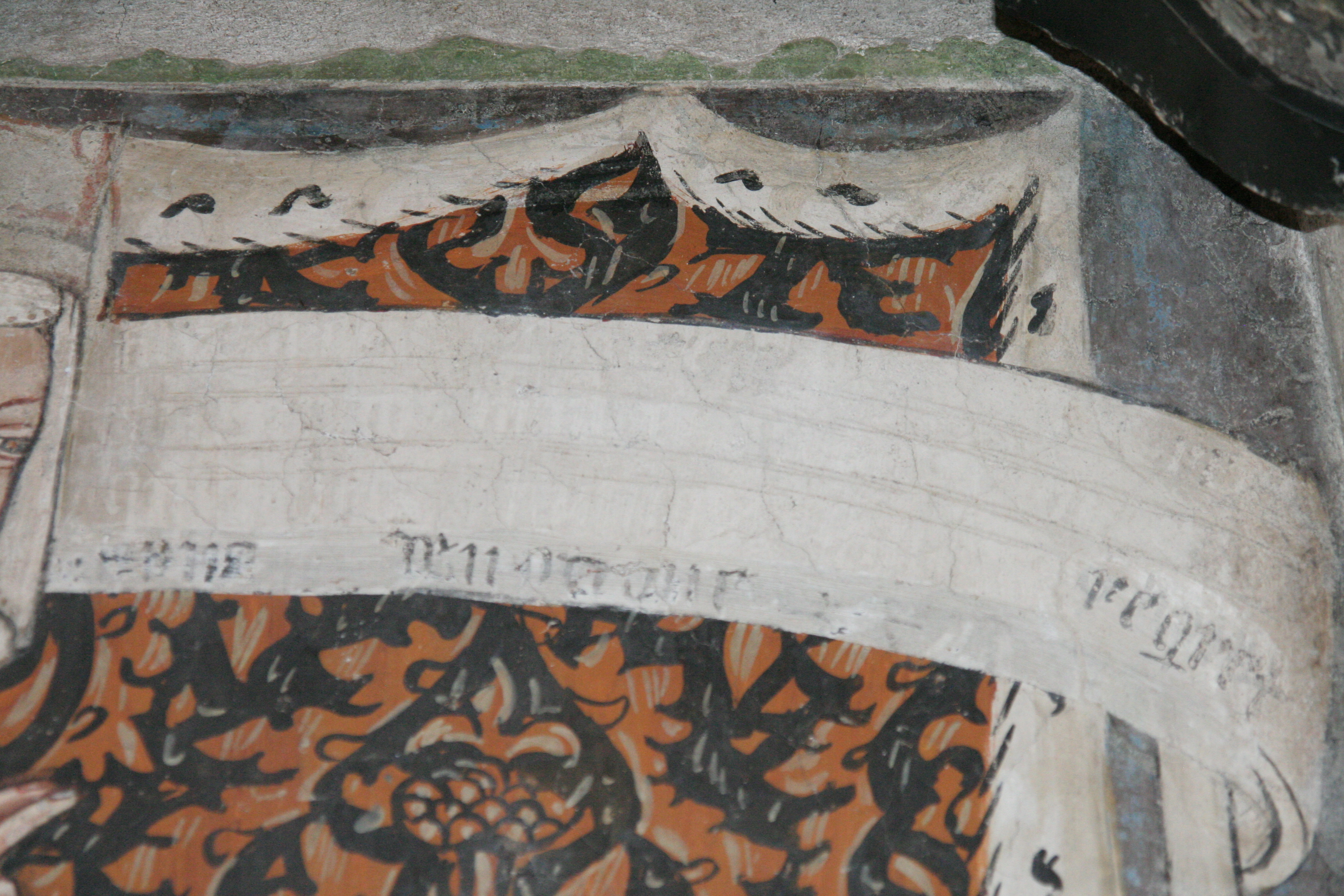Valerio discovered it in a grocer's shop, according to Newman's paper. He was a prior of the Certosa, however.
In questo anno fu celebrato il Giubileo a Roma dal pontefice Bonifacio. Ne’medesimi giorni a Milano abitava una femmina eretica nominata Guglielma, la quale non poco si mostrava religiosa e santa; viveva con un certo Andrea, chiamato Saramita, e sotto una simulata bontà tenevano una sinagoga sotterranea vicino a porta Nuova usandovi una fetida eresia. Quivi avevano stabilito di riunirsi al mattutino, intervenendovi molte fanciulle, matrone, vedove e maritate, le quali per ingiunzione di Guglielma erano chiericate a modo dei sacerdoti. Vi intervenivano eziandio molti giovani ed uomini a guisa di religiosi; ed in questa adultera sinagoga avevano un altare, avanti al quale facevano le loro frodolenti orazioni. Dopo di che gridavano, congiungiamoci, congiungiamoci, ed il lume ponevano sotto un sestajo, eseguendo poi quanto si era ordinato; ad in tal modo commettevano l’occulto stupro. In processo di tempo, questa nefandissima Guglielmina abbandonando la vita, dai monaci di Chiaravalle fu tumulata per santa. Dopo la sua morte, il memorato Andrea per sei anni continui seguitó il sacrilego e scelleratissimo rito. Dal ultimo venne palesato da un milanese mercatante per nome Corrado Coppa; il quale avendo la moglie sua che frequentava il vituperoso luogo, nel capo entrandogli non poco sospetto, deliberò di venire al chiaro; e così una notte levandosi, seguitò incognito la moglie sino alla radunanza, e quivi, nascosto il lume, secondo il costume degli altri, conobbe la propria moglie e le tolse dal dito un zafiro, ch’essa portava e uscì insieme cogli altri dall’infame luogo. Dopo quattro giorni alla sua donna dimandò l’anello, simulando volere per suo bisogno farne un deposito: essa finse di averlo perduto e finalmente, dopo che simulò d’averlo ricercato con diversi modi, rispose che non lo trovava. Corrado da ultimo diede un solenne convito, intervenendovi molti suoi parenti ed amici colle mogli, le quali vedute aveva nel consorzio. A questi, dopo il pranzo, Corrado cominciò a dire: Ciascuno faccia colla donna sua il giuoco, come io intendo di farlo alla mia e dopo ve ne manifesterò la cagione; e tutti promisero che farebbero. Allora, spartita la legatura del capo alle mogli, trovarono sulle loro teste una chierica; della qual cosa grandemente meravigliandosi ne dimandarono la causa. Corrado il tutto ordinatamente dichiarò. Il perché quelli manifestarono sì inaudita scelleraggine a Matteo Visconti, principe della città; e questi, per consiglio degli inquisitori, impose al podestá che Andrea con ogni suo seguace venisse nelle sue forze. Eseguitosi il comando, tutti furono posti al tormento, dove confessarono tal cosa aver fatta continuamente per lo spazio di undici anni passati. Da ultimo Andrea coi suoi compagni fu abbruciato e parimente si fece delle ossa della pessima Guglielmina, la quale essendo tenuta per santa al tutto fu manifestata per somma eretica.
In this year (1300) the Jubilee was celebrated in Rome by Pope Boniface. At the same time in Milan there lived a female heretic named Guglielma, who presented herself as not a little religious and holy; she lived with a certain Andrea, called Saramita, and under cover of a pretended goodness they ran an underground synagogue near Porta Nuova, practising a foul heresy. They had agreed to assemble in the morning, involving many maidens, matrons, widows and wives, which by order of Guglielma were ordained in the manner of priests. Also many youths and men were involved, in the guise of religion, and in this adulterous synagogue they had an altar, before which they made their fraudulent prayers. After shouting, “Let us come together, let us come together!”, and placing the light under a sestaio, they then performed what was commanded; and in such a fashion they committed the secret rape. In a little while, this most wicked Guglielma having abandoned life, she was buried as a saint by the nuns of Chiaravalle. After her death, for six continuous years Andrea followed the sacrilegious and wicked ritual. At last it was uncovered by a Milanese merchant named Corrado Coppa, whose wife was attending the shameful place, entering at the head not in the least suspected, he decided to come to light, and so one night, rising, followed his wife secretly until the congregation, and there, he hid the lamp, according to the customs of others, he met his wife and removed from her finger a sapphire she was wearing and went out together with the others from the infamous site. After four days he asked his wife for the ring, pretending he needed it to make a deposit: she pretended to have lost it and finally, after pretending to have looked for it in different ways, said she could not find it. Corrado thereafter gave a solemn banquet, inviting many of his relatives and friends along with his wife, whom he had seen in the consortium. To these, after dinner, Corrado began to say: each man will play the game with his wife as I intend to do it with mine, and later I will show the reason, and all promised that they would. Then, parting the tie of the hair of the wives, they found a bald spot on their heads, which is something he demanded no greatly surprised the cause. Corrado said it all neatly. And because of those events of unprecedented wickedness, Matteo Visconti, the Prince of the city, and these, by the advice of the inquisitors, imposed by the mayor that Andrea was in his every follower forces. The order being executed, all were put to torture, where he confessed what he had done so continuously for the space of eleven years. Finally Andrea with his companions was burned and likewise became the bones of the poor Guglielma, which being held as a saint to sum everything was manifested heretical.



